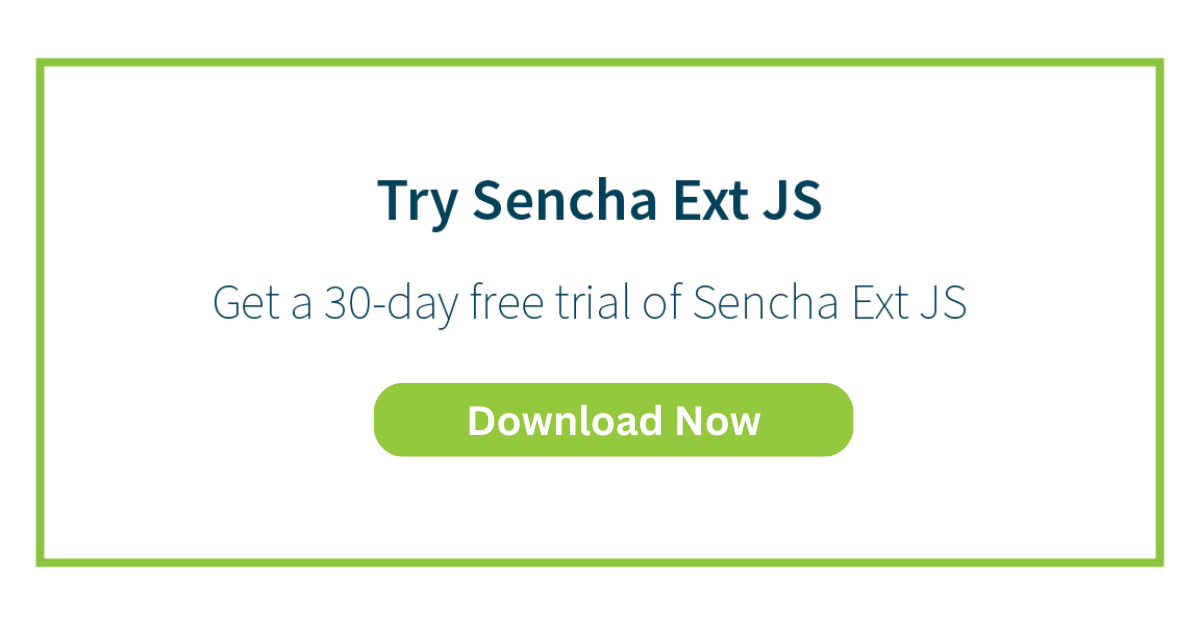Top Factors To Know Before Choosing the Front-End Framework for Logistics
The logistics business will not function without proper digital solutions. These solutions help manage complicated processes like real-time monitoring and data guessing. Key front-end frameworks assist in building user interfaces for these applications. They ensure logistics applications are efficient, expandable, and easy to use.
Selecting the right framework is important. It directly impacts the efficiency and ease of use of an application. A good framework makes it easier for teams to be productive and effective. It helps them create, manage, and improve the application.
Currently, it is easier to add devices to apps with complex logistics systems. These apps need verification systems for access, live tracking on the map, and a dashboard interface. Media quality should adapt to all formats without limitations. To ensure these functions, an adequate framework is necessary.
This article will guide you on deploying such an app into production. We will cover data synchronization, load balancing, and performance aspects. We will also discuss security and design principles. Additionally, we will emphasize the community’s role in promoting the project. Let’s get started.
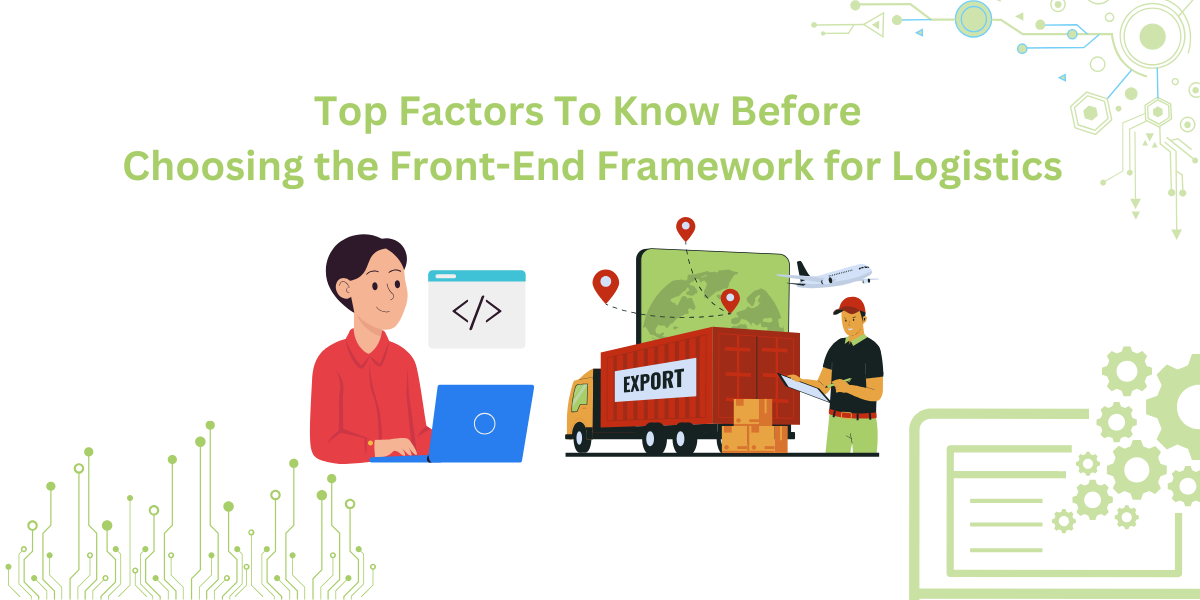
What Is Frontend Development?
Frontend development covers all visible parts of a website or application that users interact with. It focuses on the UI and UX. Developers create visual aspects like templates, shapes, menus, figures, and animations to enhance usability, access, and aesthetics.
Frontend development relies on three core technologies. The first is HTML, which defines what a webpage contains. Next is CSS, which makes the content visually appealing. The last is JavaScript, which adds functionalities like collapsible menus and live updates. Together, they form the frontend.
Frontend developers also use libraries for design and coding. Some popular ones are React, Angular, and Vue.js. These libraries make coding easier and speed up the creation process. They are ideal for fast-growing, high-end applications.
Frontend developers must understand UX principles. This helps them create user interfaces tailored to a purpose. They must ensure consistency across devices, resolutions, and browsers. Responsiveness and reach are key concerns.
Collaboration is essential in frontend development. Developers interact with designers, backend developers, and other team members. This collaboration turns the project idea into reality. The user interface is central to the user’s interaction with the application and the perception of the entire product.
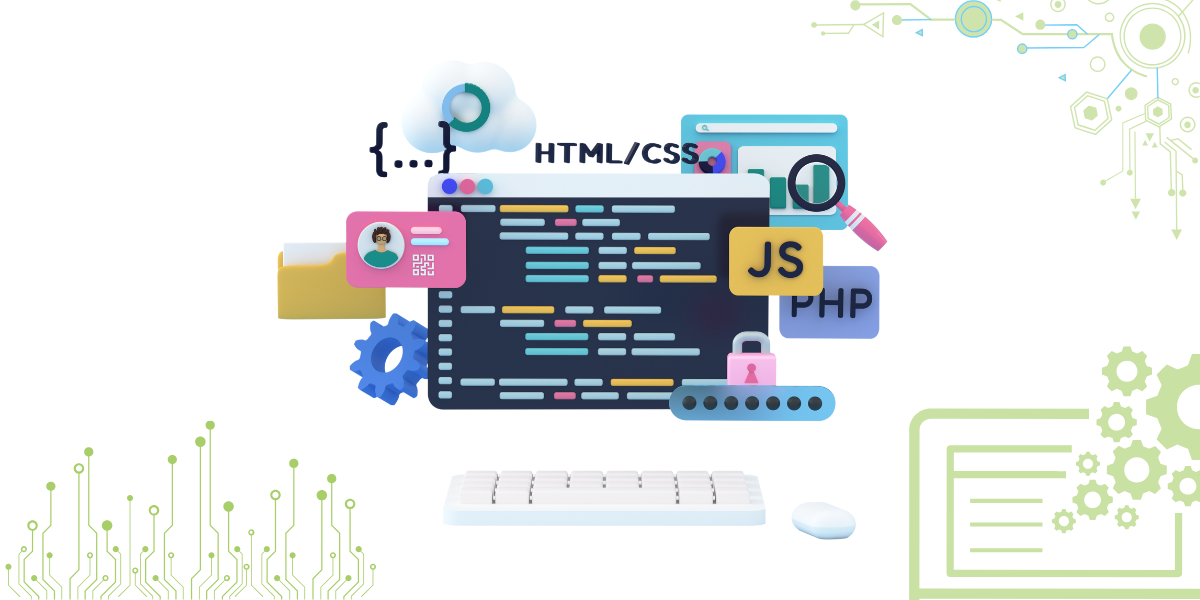
Which Logistics-Specific Challenges Should You Consider When Selecting a Front-End Framework?
Acquiring a frontend framework for logistics applications is a critical decision. Logistics systems involve complex functions that need a large, up-to-date database. The chosen ecosystem must meet these requirements.
Real-Time Data Handling
Real-time data is crucial for logistics systems. Managing items and monitoring storage require protection of real-time data. The infrastructure should support features like WebSocket. It must maintain a consistent data flow. React and Vue.js can handle WebSocket updates.
Scalability
As businesses grow, additional logistics applications may be needed. More users and data will increase demands on the framework. Angular and React are great for building scalable systems due to their modular capabilities.
Performance Optimization
Logistics systems handle a lot of information, such as routes, shipments, and inventories. Poorly optimized frameworks can affect an application’s performance. Strong frameworks like React and Svelte use features like virtual DOM and optimized rendering to improve performance.
Responsive and Adaptive Design
Logistic applications are accessed on different devices like desktops, tablets, and mobile phones. The framework should support responsive design. Tools like Bootstrap and Material-UI help achieve this.
Complex UI Requirements
Logistics dashboards may require advanced UI features like charts, maps, or drag-and-drop elements. Frameworks like D3.js and Leaflet are great for handling these UI elements.
Long-Term Support and Community
Logistics systems are capital-intensive and need long-term support. Choose frameworks with a strong foundation. They should have regular updates and robust documentation to ensure reliability and reduce maintenance efforts.
The tasks mentioned above are key to optimizing the selected framework. Real-time capacity, scalability, and optimization should be top priorities. Additionally, responsive design and community support are essential.

What Is a Front-End Framework?
A front-end framework is a tool designed to simplify the development of the graphical user interface of web and mobile applications. Front-end frameworks provide pre-written code libraries, tools, and modules that developers can use to build rich UIs faster. Some frameworks also provide plugins and pre-built templates to speed up the app development process.
Most of these frameworks are Javascript based, making them easy to use. In other words, developers utilize front-end frameworks to create beautiful UIs without writing code for repetitive tasks again and again from scratch. These frameworks also help make highly-functional UIs by reducing bugs, thereby improving the app’s performance and overall user experience.
A front-end framework is especially helpful for complex projects like enterprise-grade app development. This is because enterprise-level apps require various UI components that can work together flawlessly.
Why Is It Important to Choose the Best Front-End Framework For Logistics?
Using the right front-end framework for logistics offers several benefits:
Faster App Development
Companies want to have their logistics apps developed as quickly as possible. And front-end frameworks help developers deliver these apps faster by providing pre-written libraries and pre-built modules and templates. These frameworks eliminate the need to write lengthy code for creating UIs.
Using the right framework, developers can get default code for common UI elements for their logistics app and customize them as per the business’s needs. Moreover, a good framework offers features like Live Reload/Hot Reload and Virtual DOM for rapid app development.
Enhanced Code Efficiency
Good front-end frameworks are designed to improve code readability. Moreover, they provide reusable components, eliminating the need to write duplicate code repeatedly.
If you’re using a reliable front-end development framework that offers pre-built components, you’ll get fully-tested UI elements that work flawlessly across browsers and devices. This way, you don’t have to test code/components for cross-browser and cross-platform compatibility.
Easy Maintenance
A good framework utilizes standardized coding practices, making it simpler and easier to maintain and update the codebase.
Better Community Support and Learning Resources
A good and popular front-end framework has a huge community where you can find solutions to your problems related to the framework quickly. It also has extensive documentation that includes all the details regarding the features and functionality of the framework.
Moreover, the best framework offers many other learning resources, such as webinars, tutorials, ebooks, etc., to help you get started quickly.
Better UI and User Engagement
Using the best framework means developers can create stunning and consistent UI using a base style that they can extend. Moreover, it offers responsive components that can adapt to various screen sizes to improve the user experience.
Support for Mobile App Development
While many front-end frameworks are designed only for web development, the best framework also supports mobile development. It provides the necessary tools and features required for creating apps optimized for mobile devices.
Also Read: How to Choose the Best Front-End Framework for Development
Top Factors To Consider Before Choosing the Best Front-End Framework For Logistics
Since the market is flooded with front-end frameworks, choosing the best framework for your app can be challenging. Here are the key factors you must consider to make the right decision:
Performance
A logistics app needs features to track vehicles and provide real-time updates. This involves handling large datasets. Hence, choosing a front-end framework that can handle big data is crucial. For example, you might need to create a data grid for your app that can efficiently display real-time data related to vehicle location, details of where various goods are located, etc.
Customization and Extensibility
Different businesses need different features in their logistics apps, such as fleet management features, real-time monitoring and tracking features, warehouse management features, etc. Hence, you should look for a framework that allows you to customize your UI as per your needs. A good framework also offers industry-specific features, such as live data streaming in data grids for logistics apps.
Support for Responsiveness
Many people today rely on mobile devices to access web apps. Since different mobile devices have different screen sizes, choosing a framework with support for responsiveness is essential. In other words, the framework should provide responsive components that can adapt to different screen sizes.
Security and Compliance
As cyber attackers are utilizing sophisticated technologies to steal private data, ensuring your logistics app is highly secure is more important than ever. Otherwise, cybercriminals can misuse your data, causing severe financial and legal implications.
For example, criminals can try to access your vehicle’s location to execute a robbery. Moreover, logistics often involves the movement of goods across global markets. And since different countries have different data protection laws, companies must comply with certain security regulations. All these factors make it crucial to choose a highly secure front-end framework.
Research has shown open-source security breaches have significantly increased in recent years. As a result, many executives refrain from using open-source frameworks in their organizations.
Ease Of Integration With Other Libraries
The best framework provides the necessary tools to create a highly functional and responsive interface. However, you might need additional libraries for rich text editing, DOM manipulation, data processing, etc. Hence, you should look for a framework that is easy to integrate with other libraries.
Sencha Ext JS – The Best Front End Front End Framework For Logistic Applications
Ext JS is a robust JavaScript front-end framework for creating enterprise-grade web and mobile apps. The robust framework offers all the features you need to create high-performance and beautiful logistics apps.
These include efficient data handling, modern UI components, cross-browser compatibility, responsive designs, and more. From Siemens, Apple, and Cisco to American Airlines, Accenture and Symantec, more than 10,000 enterprises trust Ext JS for their front-end development needs, including many Fortune 100 companies.
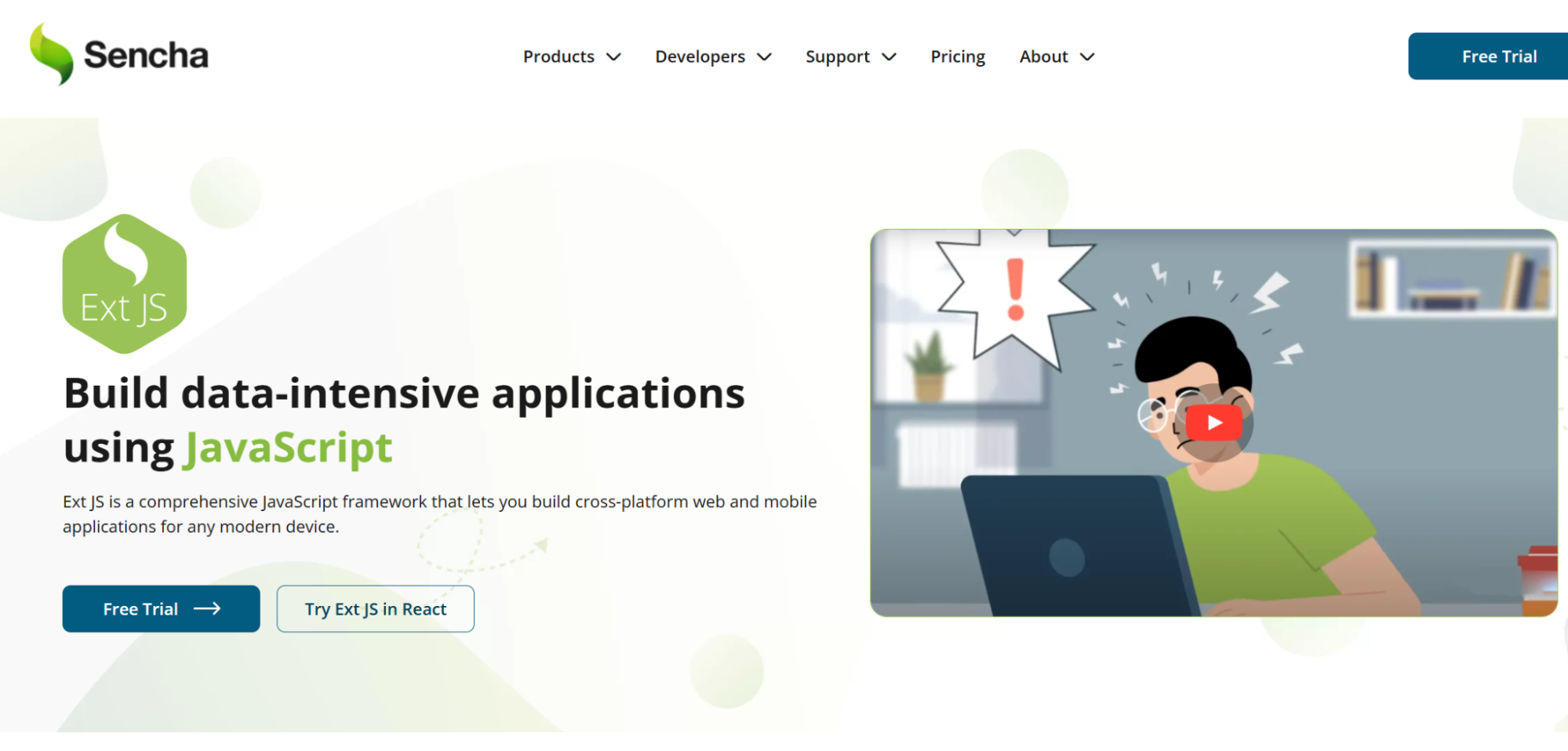
Why Choose Ext JS Front End Framework?
Here are the key features of Ext JS that make it one of the best front-end frameworks:
Fully Functional UI Components
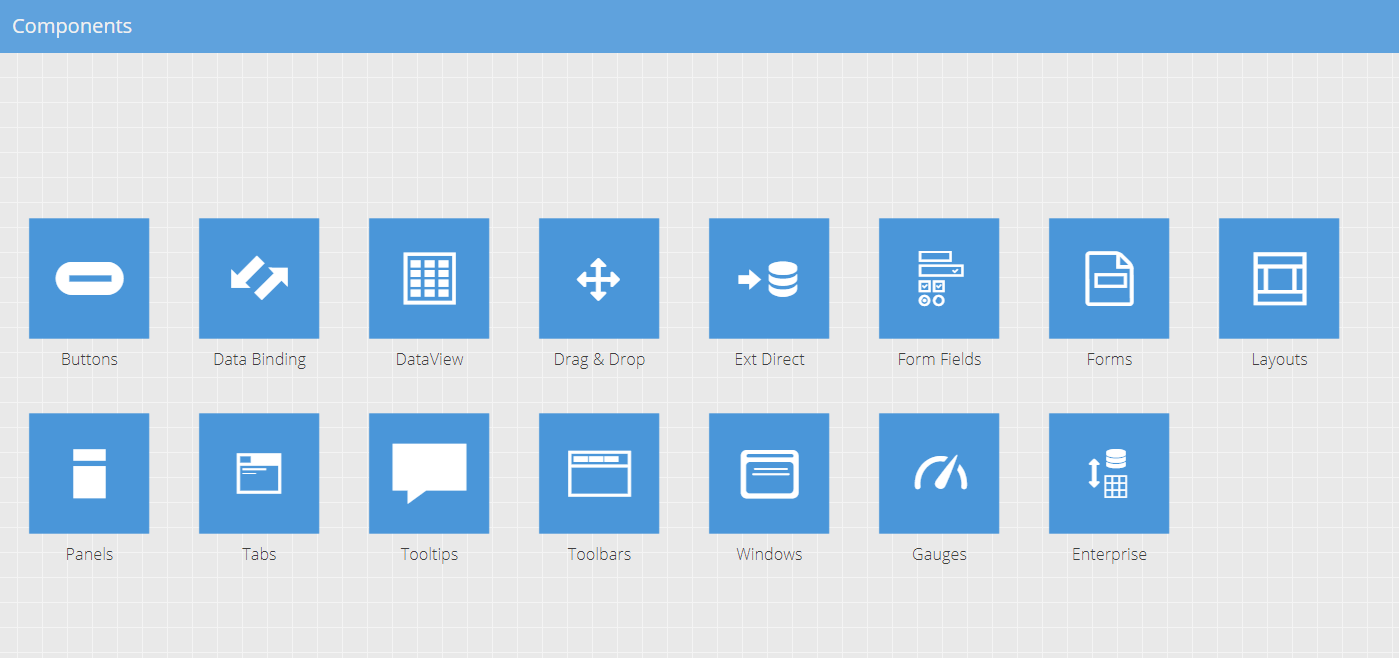
Ext JS offers 140+ high-performance, pre-built UI components for creating different types of UIs, from basic to complex interfaces. These include menus, buttons, carousels, icons, sliders, text fields, calendars, and checkboxes. All the components are built and tested to work together flawlessly in any web app.
Developers can utilize common UI elements as is or customize them as per their needs. Kaseware, an intelligent investigation platform to combat security threats, used Ext JS and its components to design a high-performance app with interactive and functional UI.
Here is what Dorian Deligeorges, CEO & Founder of Kaseware, says about Ext JS: “We use almost every aspect of Ext JS and have components that are customized for the application. Ext JS provides a secure set of components to build our web-based and mobile platform and gives us the capability to customize the app the way we want.”
Powerful Data Grid
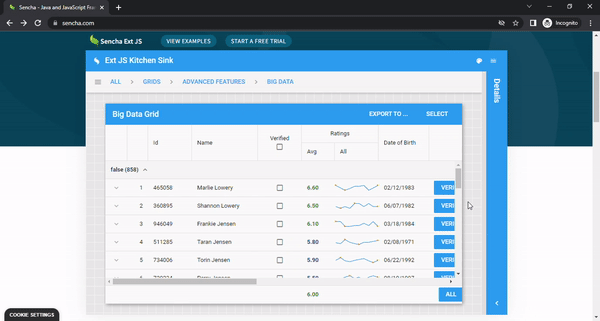
As aforementioned, logistics apps need to be able to handle large streams of real-time data. Hence, they often need a robust data grid to display big data sets on the web or mobile app. Ext JS offers a blazing-fast data grid that can handle millions of records efficiently without compromising performance.
Moreover, the grid supports all types of basic and advanced row and column operations. These include drag-and-drop, grouping, scrolling, sorting, row expander, and more.
A renowned Argentinian hospital utilized Ext JS for an Oncology and Home System, and here is what their lead JavaScript developer, Maximiliano Yusso, said about using Ext JS:
“The object-oriented nature of the Ext JS framework and the well-laid-out class structure makes the app versatile and easily scalable. There are no issues with performance since the Ext JS grid and other components work seamlessly with big data.”
Scheuring AG, a Switzerland-based consulting practice service and software developer company, utilized Sencha Ext JS. Here is what Heinz Scheuring had to say about Ext JS:
“The Sencha grid is the key element of resSolution and hyperManager. Ext JS and its other components have really helped us refine our business approach.”–
Try Ext JS grid and its impressive features today.
Responsive Design
Ext JS provides responsive components that can efficiently adapt to different screen sizes, such as web, smartphones and tablets. Moreover, all the components are designed to work across browsers.
Highly Secure
Ext JS is one of the most secure front-end frameworks, and it’s one of the key reasons why so many enterprises trust the framework. Its code is fully tested and highly secure. Moreover, Ext JS offers sophisticated built-in security features, allowing developers to implement powerful authentication mechanisms.
Kaseware, an intelligent investigation platform to combat security threats, used Ext JS due to its highly secure nature. And here is what its CEO said about Ext JS:
“With Ext JS, we were able to better enforce security within our code base. Ext JS provides a secure set of components to build our web-based and mobile platform and gives us the capability to customize the app the way we want.”
Cost Effective
While open-source frameworks seem more cost-effective at first glance, Ext has proved to be more cost-effective for many organizations. As per research by Dimensional Research, Ext JS users have saved:
- 50% on front-end development
- 75% on annual app maintenance
- 75% on cross-platform and cross-browser development
Read the full analysis of customer ROI here. Also Read: Best Front-End JavaScript Frameworks For Developers
Case Study – How Ext JS Helped HISCOM Deliver A Highly Productive Vending Machine Operation and Logistics Platform

HISCOM is a Japan-based services and solutions company that offers vending machine operation and logistics solutions for beverage manufacturers. The company manages logistics optimization of transportation, warehousing, and delivery.
Additionally, the company offers an inventory management system, routing, transportation truck loading, and scheduling as a part of its core business solutions for vending machine field operations.
Some of the major challenges that the company faced in terms of vending machine operations were suboptimal usability of the web system UI, shortage of vending machine field staff and adherence to the Japanese government regulations.
Moreover, the company was looking to revamp and renew their almost -ten-year-old system that didn’t support Visual Basic (VB) 6.0 anymore. After extensively searching for solutions and frameworks, HISCOM decided to use Ext JS and RAD Server.
Using these solutions, the company successfully transformed the vending machine system into a highly productive web-based platform. The new AI-based system offered several benefits: reduced working hours, minimized lost sales opportunities, standardized field operations, and lower fuel costs. Read the complete case study here.
Conclusion
A front-end framework enables developers to build feature-rich, interactive UI for their logistics apps. However, choosing the right framework is essential. Some of the key factors to consider while selecting a front-end framework for your logistics app include customization and extensibility, security and compliance, support for responsiveness, and ease of integration with other libraries. Try Sencha Ext JS best front-end Framework for Free.
Frequently Asked Questions (FAQs)
Which Front-End Javascript Framework is the Fastest and More Reliable?
Ext JS is the most secure and fastest front-end framework offering over 140 UI components.
What to consider when choosing a front-end framework?
Consider factors like support for responsiveness, framework’s popularity, availability of learning resources, security, customization, and performance.
Why Choose Ext JS for Front-End Framework?
Ext JS offers all the features you need in a front-end framework, such as fully-tested UI components, cross-browser and cross-platform compatibility, a layout manager, charts and D3, extensive documentation, and a fast data grid.
Register yourself at Sencha today – Benefit from our enterprise-grade features for your apps.

React is perhaps the most widely used web app-building framework right now. Many developers also…

React’s everywhere. If you’ve built a web app lately, chances are you’ve already used it.…

Join 5,000+ developers at the most anticipated virtual JavaScript event of the year — August…




